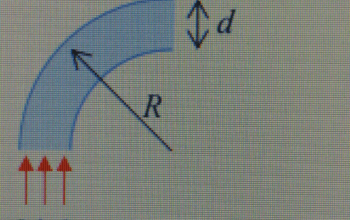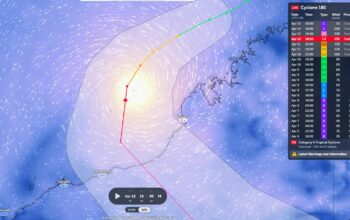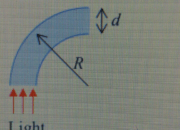The discovery and synthesis of superheavy elements has captivated the scientific community over the past few decades, particularly with reference to elements 113 and 115. These two elements are significant not only for their atomic numbers but also for the tantalizing insights they provide into the complexities of atomic structure and the underlying principles of nuclear physics. The research conducted at the Joint Institute for Nuclear Research (JINR) in Dubna, Russia, has been instrumental in these discoveries, marking a critical juncture in the field of chemistry and physics.
Element 113, known as nihonium (Nh), was officially recognized in late 2015, solidifying its place within the periodic table as the first element to be synthesized in Japan and the first to be discovered in an Asian country. The synthesis of nihonium is achieved through the collision of bismuth (Bi) target nuclei with accelerated zinc (Zn) ions. This reaction yields a fleeting nihonium nucleus, which undergoes rapid decay, thereby necessitating advanced detection techniques to observe and confirm its existence. Researchers at JINR meticulously replicated these conditions, paving the way for new insights into the properties and stability of superheavy elements.
Element 115, dubbed Moscovium (Mc), further illustrates the ongoing quest to uncover the enigmatic realm of superheavy elements. Discovered shortly after nihonium, Moscovium was synthesized through a similar approach, utilizing the interaction of americium (Am) and calcium (Ca) nuclei in a high-energy collision. The fleeting nature of Moscovium’s existence, characterized by its short half-life, has challenged scientists to develop innovative detection methodologies, fundamentally altering the approach to researching elements at the edge of the periodic table.
The implications of these discoveries extend beyond mere novelty; they present an array of opportunities for scientific inquiry. Notably, the study of nihonium and Moscovium offers insights into the so-called “island of stability,” a theoretical prediction within nuclear physics positing the existence of relatively stable isotopes of superheavy elements. This concept suggests that while most superheavy elements are unstable and decay quickly, certain configurations of protons and neutrons could yield isotopes with significantly longer half-lives. Understanding this phenomenon could revolutionize our comprehension of nuclear stability and the formation of elements in stellar environments.
Moreover, nihonium and Moscovium serve as conduits for further investigation into relativistic effects on atomic behavior. The presence of many protons within a heavy nucleus leads to complex interactions, where relativistic effects manifest prominently. These phenomena can influence the chemical properties of such elements, including their oxidation states, reactivity, and bonding characteristics. The exploration of these attributes presents a fertile ground for future research endeavours, providing chemists with the potential to illuminate the challenging nomenclature of heavy-element chemistry.
From a pedagogical standpoint, the discoveries of elements 113 and 115 serve as exemplary case studies in modern chemistry and nuclear physics. They present a tangible context for educational discourse about the periodic table’s construction, the nature of chemical bonding, and the fundamental principles governing atomic interactions. The narrative of the synthesis of these elements highlights the intricate interplay between theoretical predictions and experimental validation—a cornerstone of scientific progress. This narrative not only engages learners but also underscores the significance of interdisciplinary collaboration in scientific research.
Furthermore, the international collaboration behind the discoveries of nihonium and Moscovium exemplifies the spirit of scientific inquiry transcending geopolitical boundaries. The cooperative efforts between Russian and Japanese scientists illustrate the unifying objectives of the scientific community: to deepen our understanding of the physical world, contribute to technological advancements, and disseminate knowledge globally. This collaboration emphasizes the importance of shared resources and intellectual synergy, which are increasingly critical in an era where scientific challenges often surpass national capabilities.
Looking ahead, the pursuit of additional superheavy elements continues to excite both chemists and physicists alike. The synthesis of elements 116 to 118, including livermorium (Lv), tennessine (Ts), and oganesson (Og), exemplifies the ongoing engagements within this field. Each additional element synthesized contributes not only to the understanding of atomic behavior but also poses new questions about the bounds of chemical properties and the nature of matter itself. The elucidation of the chemical characteristics of these newly synthesized elements may open doors to potential applications in medicine, materials science, and nuclear technology.
As the scientific community delves deeper into the properties and behaviors of nihonium and Moscovium, there arises the imperative to address the challenges presented by their synthesis and stability. Continued research efforts at JINR and beyond may one day lead to the realization of practical applications for superheavy elements. This mission underscores the broad implications these discoveries entail—not solely from a theoretical standpoint but as the vanguards of future technological innovations.
In conclusion, the synthesis of elements 113 and 115 at Dubna marks a significant advancement in our understanding of nuclear physics and chemistry. They serve as a testament to human curiosity, collaborative effort, and the relentless pursuit of knowledge. As we continue to explore the boundaries of the periodic table, the discoveries made at the Joint Institute for Nuclear Research promise to unveil further mysteries about the fundamental nature of matter, all while enriching the scientific canon for generations to come.












